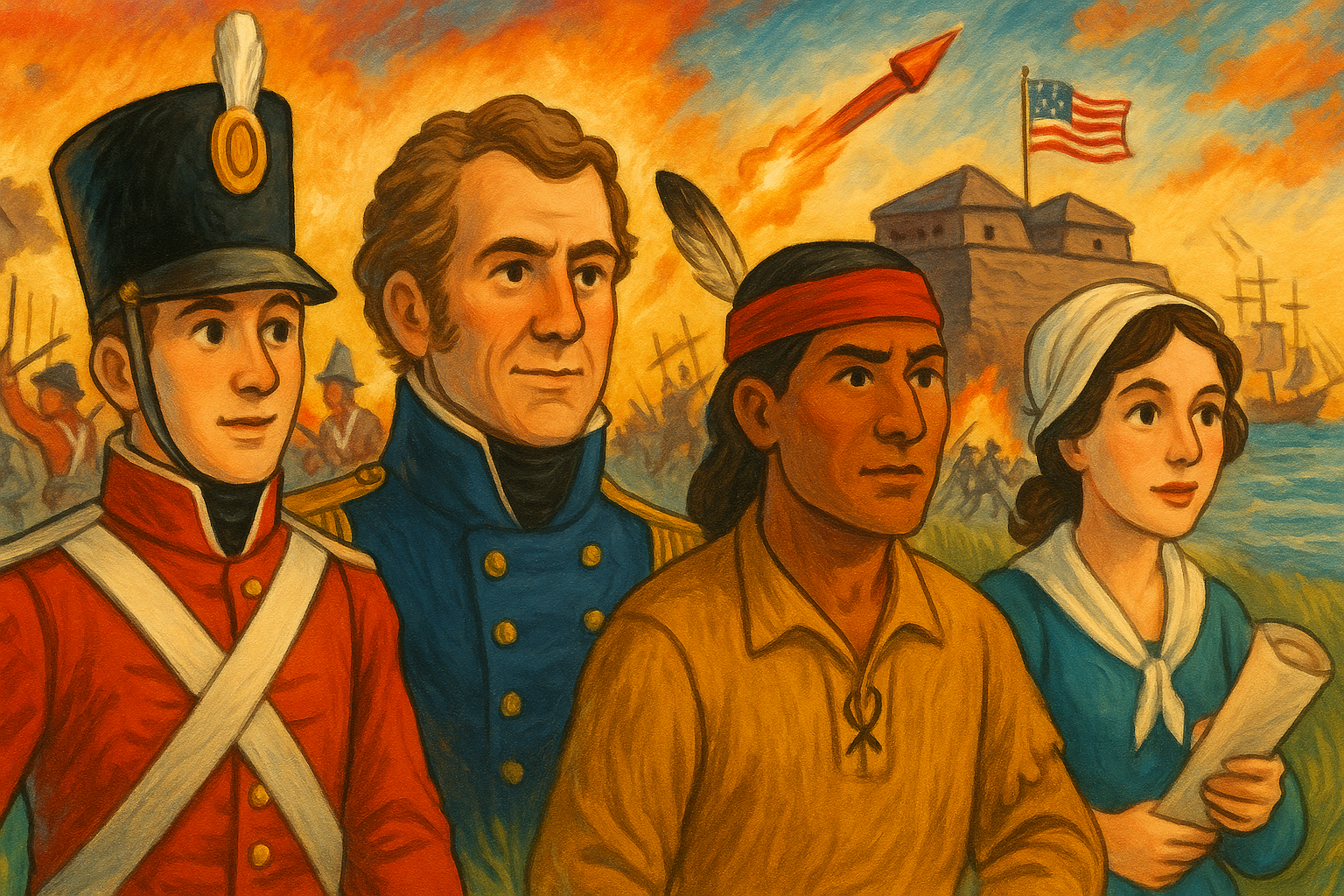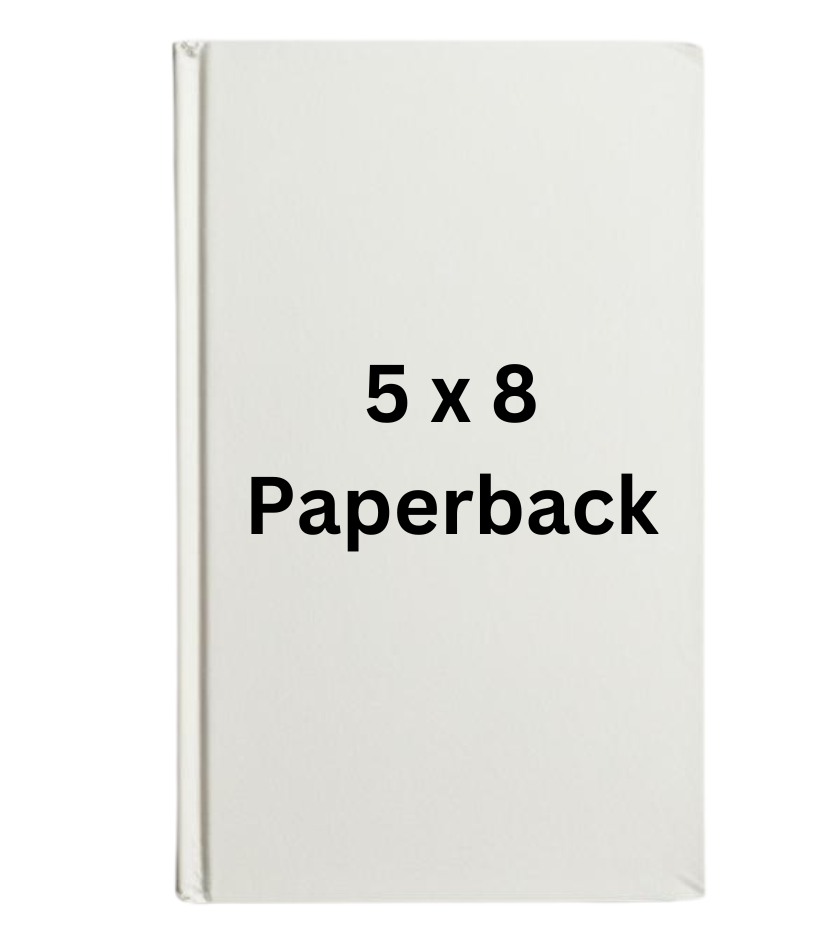
Excerpt
Introduction: A Forgotten War?
Nobody really wanted another war.
The United States had already fought hard to win its independence from Britain just a few decades earlier. People were still building homes, starting farms, and figuring out what it meant to be part of a new country. There were cities growing, businesses starting, and families hoping for peace. But all around them, trouble was bubbling—on the oceans, in the halls of government, and across the western frontier.
The War of 1812 didn’t begin with one single moment. It built up over time, like pressure inside a balloon that eventually pops.
At its heart, the war was about respect. The United States was still pretty new, and many powerful countries—especially Britain—didn’t treat it as an equal. American ships were being stopped at sea. British sailors boarded them and took people off, claiming they were British deserters. That didn’t sit well with Americans. They saw it as bullying. And nobody likes a bully.
But the sea wasn’t the only problem. Across the land that is now the Midwest, Native American tribes were trying to protect their land from being taken. The United States kept pushing west, building towns and farms on land where Native peoples had lived for centuries. Some Native leaders, like Tecumseh, believed the only way to survive was to fight back. And they found a powerful ally: the British.
That’s where things got tangled. The British were helping Native Americans resist U.S. expansion. The U.S. saw that as a threat. At the same time, American traders and ships were getting blocked from trading with Europe. And every time a British ship captured an American sailor, people at home grew angrier.
Finally, enough was enough.
In 1812, President James Madison asked Congress for permission to declare war. He said that American honor was at stake, that the country had to defend its rights. Congress agreed, and the United States declared war on Britain. Not everyone cheered. Some parts of the country—especially in New England—thought it was a bad idea. They worried that war would hurt trade and bring more problems than it solved. Still, the war was on.
What made this war different from others is that there was no clear villain or hero. Britain wasn’t trying to take over the U.S. again. They were busy fighting a much bigger war in Europe against a man named Napoleon Bonaparte. America wasn’t trying to conquer Britain either. The reasons were complicated. Some people thought the U.S. should invade Canada, which was controlled by Britain, to stop attacks from the north. Others thought the war was really about gaining land and power, especially in the West.
Even the people fighting it weren’t always sure what the goal was.
Battles broke out along the border with Canada, out on the ocean, and deep in the woods. Ships clashed on the Great Lakes. Soldiers marched through forests. Towns were burned. Native tribes chose sides—some with the British, some with the Americans—and found themselves caught in a war they didn’t start.
And then there were surprises.
Washington, D.C., the capital of the United States, was captured by British forces. The White House was set on fire. On another front, a lawyer named Francis Scott Key ended up watching a battle from a ship and wrote a poem about a flag still flying after a long night. That poem eventually became something you’ve probably heard before: the national anthem.
The war dragged on for more than two years. Battles were won, then lost. Neither side really had a big, final victory. But eventually, both sides were tired. Peace talks began in a city called Ghent, in modern-day Belgium. A treaty was signed in late 1814, though it took weeks for the news to reach the U.S.
Oddly enough, one of the most famous battles of the whole war happened after the peace treaty had already been signed. In early 1815, General Andrew Jackson led a group of soldiers, farmers, freed slaves, and even pirates in defending New Orleans from a British attack. They won big. It didn’t change the outcome of the war, but it made Jackson a national hero.
By the time the war ended, thousands had died. Cities had been destroyed. Native American nations had lost even more land. But the U.S. had gained something hard to measure: a new sense of confidence.
The country had stood up to a world superpower and hadn’t been crushed. It had survived. And for many Americans, that felt like a win—even if the war itself didn’t really have one.
Nobody really wanted another war.
The United States had already fought hard to win its independence from Britain just a few decades earlier. People were still building homes, starting farms, and figuring out what it meant to be part of a new country. There were cities growing, businesses starting, and families hoping for peace. But all around them, trouble was bubbling—on the oceans, in the halls of government, and across the western frontier.
The War of 1812 didn’t begin with one single moment. It built up over time, like pressure inside a balloon that eventually pops.
At its heart, the war was about respect. The United States was still pretty new, and many powerful countries—especially Britain—didn’t treat it as an equal. American ships were being stopped at sea. British sailors boarded them and took people off, claiming they were British deserters. That didn’t sit well with Americans. They saw it as bullying. And nobody likes a bully.
But the sea wasn’t the only problem. Across the land that is now the Midwest, Native American tribes were trying to protect their land from being taken. The United States kept pushing west, building towns and farms on land where Native peoples had lived for centuries. Some Native leaders, like Tecumseh, believed the only way to survive was to fight back. And they found a powerful ally: the British.
That’s where things got tangled. The British were helping Native Americans resist U.S. expansion. The U.S. saw that as a threat. At the same time, American traders and ships were getting blocked from trading with Europe. And every time a British ship captured an American sailor, people at home grew angrier.
Finally, enough was enough.
In 1812, President James Madison asked Congress for permission to declare war. He said that American honor was at stake, that the country had to defend its rights. Congress agreed, and the United States declared war on Britain. Not everyone cheered. Some parts of the country—especially in New England—thought it was a bad idea. They worried that war would hurt trade and bring more problems than it solved. Still, the war was on.
What made this war different from others is that there was no clear villain or hero. Britain wasn’t trying to take over the U.S. again. They were busy fighting a much bigger war in Europe against a man named Napoleon Bonaparte. America wasn’t trying to conquer Britain either. The reasons were complicated. Some people thought the U.S. should invade Canada, which was controlled by Britain, to stop attacks from the north. Others thought the war was really about gaining land and power, especially in the West.
Even the people fighting it weren’t always sure what the goal was.
Battles broke out along the border with Canada, out on the ocean, and deep in the woods. Ships clashed on the Great Lakes. Soldiers marched through forests. Towns were burned. Native tribes chose sides—some with the British, some with the Americans—and found themselves caught in a war they didn’t start.
And then there were surprises.
Washington, D.C., the capital of the United States, was captured by British forces. The White House was set on fire. On another front, a lawyer named Francis Scott Key ended up watching a battle from a ship and wrote a poem about a flag still flying after a long night. That poem eventually became something you’ve probably heard before: the national anthem.
The war dragged on for more than two years. Battles were won, then lost. Neither side really had a big, final victory. But eventually, both sides were tired. Peace talks began in a city called Ghent, in modern-day Belgium. A treaty was signed in late 1814, though it took weeks for the news to reach the U.S.
Oddly enough, one of the most famous battles of the whole war happened after the peace treaty had already been signed. In early 1815, General Andrew Jackson led a group of soldiers, farmers, freed slaves, and even pirates in defending New Orleans from a British attack. They won big. It didn’t change the outcome of the war, but it made Jackson a national hero.
By the time the war ended, thousands had died. Cities had been destroyed. Native American nations had lost even more land. But the U.S. had gained something hard to measure: a new sense of confidence.
The country had stood up to a world superpower and hadn’t been crushed. It had survived. And for many Americans, that felt like a win—even if the war itself didn’t really have one.




